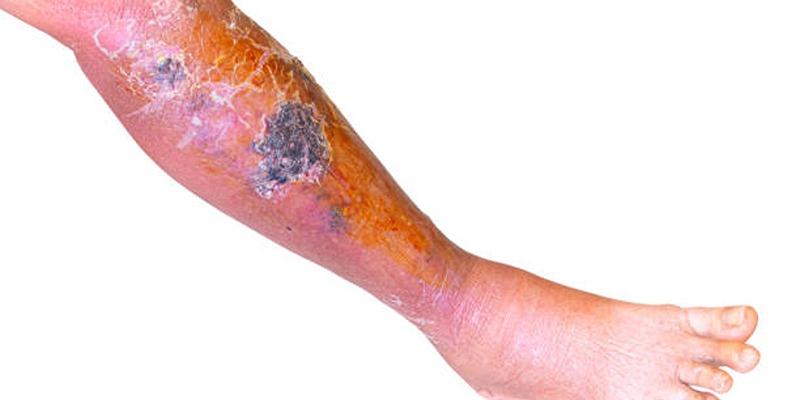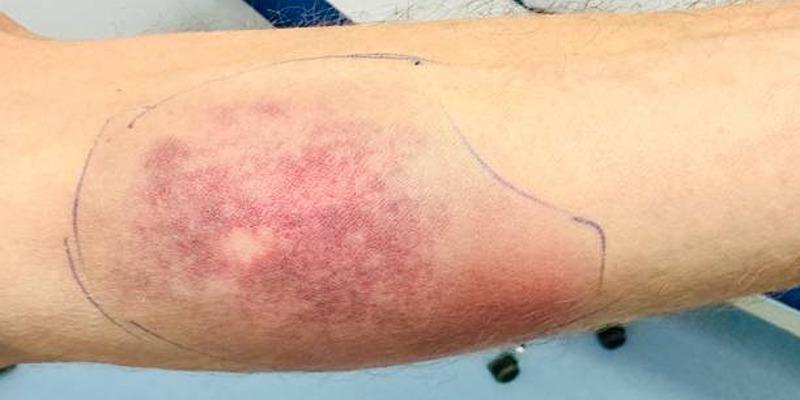What Causes Septicemia? Risk Factors Explained Clearly
Sepsis or blood poisoning is an alarming medical condition that arises when bacteria or their products are found in the blood leading to inflammation anywhere in the body. If not treated early it may develop into sepsis is dangerous and needs urgent attention from a medical practitioner. Knowledge of the causes and the factors that predispose a patient to septicemia is crucial to avoiding septicemia in the first place or minimizing its effects. This article will explore the causes, risk factors, symptoms, and prevention methods, providing a clear guide to promote awareness and a healthier lifestyle.
What Is Septicemia?
 Septicemia is not a singular disease but a state resulting as a complication of a bacterial infection that has gone systemic. It produces toxins that, when released, cause an inflammation process that could harm the organs and tissues of the human body. Although there are developments in medicine that make it easier to control septicemia, this disease is still a problem for worldwide medicine because of the high rates of its progression and the severity of its outcomes.
Septicemia is not a singular disease but a state resulting as a complication of a bacterial infection that has gone systemic. It produces toxins that, when released, cause an inflammation process that could harm the organs and tissues of the human body. Although there are developments in medicine that make it easier to control septicemia, this disease is still a problem for worldwide medicine because of the high rates of its progression and the severity of its outcomes.
Causes of Septicemia
Septicemia arises from various sources, with bacterial infections being the primary cause. However, several specific factors and scenarios can lead to its development.
Bacterial Infections
The most common cause of septicemia is bacterial infections. These bacteria can originate from different parts of the body:
- Respiratory Infections: Conditions like pneumonia, caused by bacteria such as Streptococcus pneumoniae, are common sources of septicemia.
- Urinary Tract Infections (UTIs): UTIs, especially those caused by Escherichia coli (E. coli), can lead to septicemia if the bacteria spread to the kidneys or bloodstream.
- Abdominal Infections: Bacterial infections in the gastrointestinal tract, such as appendicitis or peritonitis, can cause septicemia.
- Skin Infections: Wounds, burns, or cellulitis that are not properly treated can provide a pathway for bacteria to enter the bloodstream.
Invasive Medical Procedures
Procedures such as surgeries, catheter insertions, or intravenous (IV) treatments can inadvertently introduce bacteria into the bloodstream. While modern hospitals adhere to strict sterilization protocols, invasive medical interventions always carry a small risk of infection.
Weakened Immune System
People with weakened immune systems are particularly vulnerable to septicemia. Conditions such as cancer, HIV/AIDS, and autoimmune diseases impair the body's ability to fight off infections effectively. Similarly, treatments like chemotherapy or immunosuppressive medications for organ transplant recipients increase the risk.
Untreated or Neglected Infections
Failure to treat minor infections can lead to complications. For instance, an untreated urinary tract infection can escalate into a kidney infection and then progress to septicemia. Early medical intervention is crucial to preventing such outcomes.
Risk Factors of Septicemia
While anyone can develop septicemia, certain groups and conditions increase the risk significantly.
Age-Related Risks
- Infants and Young Children: Their underdeveloped immune systems make them particularly vulnerable to infections that can lead to septicemia.
- Elderly Individuals: Aging weakens the immune response, leaving older adults more susceptible to infections and complications like septicemia.
Chronic Illnesses
Chronic conditions such as diabetes, kidney disease, and liver disease significantly raise the risk of septicemia. These illnesses weaken the body’s defenses, making it harder to fight infections effectively.
Hospitalization and Medical Devices
Prolonged hospital stays, especially in intensive care units (ICUs), increase exposure to resistant bacteria. Devices like ventilators, central lines, or urinary catheters can act as potential entry points for bacteria.
Recent Surgery or Injuries
Post-surgical patients and individuals recovering from major injuries face a higher risk of septicemia, particularly if proper wound care and infection prevention measures are not followed. Surgical wounds and open injuries provide easy access for bacteria to enter the bloodstream.
Compromised Immune Systems
Conditions that suppress the immune system, such as cancer treatment, HIV, or autoimmune diseases, increase susceptibility to bacterial infections and septicemia. Immunosuppressive drugs taken after organ transplants further exacerbate this risk.
Signs and Symptoms to Watch For
 Recognizing the early signs of septicemia is vital for timely treatment. Common symptoms include:
Recognizing the early signs of septicemia is vital for timely treatment. Common symptoms include:
- High Fever: A sudden and persistent fever is often one of the first signs of septicemia.
- Chills and Shivering: Severe chills or shivering may accompany fever, indicating an infection.
- Rapid Breathing and Heart Rate: These are signs of the body’s systemic response to infection.
- Low Blood Pressure: A drop in blood pressure can cause dizziness or fainting, signaling poor circulation.
- Altered Mental State: Confusion, disorientation, or extreme fatigue may occur as the infection progresses.
- Skin Changes: Pale, mottled, or clammy skin can indicate poor blood flow and the need for urgent medical care.
If any of these symptoms appear, especially after an infection or surgery, seek medical attention immediately.
How to Prevent Septicemia
Prevention plays a critical role in reducing the risk of septicemia. By following certain precautions, individuals can minimize their chances of developing this severe condition.
Timely Treatment of Infections
One of the most effective prevention strategies is addressing infections promptly. Minor infections should not be ignored, as they can escalate into more severe conditions if untreated.
Good Hygiene Practices
Maintaining personal hygiene significantly reduces the risk of bacterial infections. Regular handwashing, cleaning wounds properly, and ensuring surgical sites remain sterile are essential preventive measures.
Vaccinations
Vaccines play a crucial role in preventing infections that can lead to septicemia. Vaccinations against pneumonia, influenza, and meningitis are particularly important for children, the elderly, and individuals with chronic illnesses.
Managing Chronic Conditions
Effectively managing chronic diseases like diabetes and kidney disease can help reduce susceptibility to infections. Regular checkups and adherence to prescribed treatments are vital for maintaining health.
Antibiotic Stewardship
Using antibiotics only when prescribed by a healthcare professional helps prevent antibiotic resistance. Overusing or misusing antibiotics can make bacterial infections harder to treat, increasing the risk of septicemia.
When to Seek Medical Attention
It’s crucial to consult a doctor if you experience symptoms of infection that do not improve with time or worsen rapidly. Early intervention can prevent the infection from spreading to the bloodstream and causing septicemia. Post-surgical patients should monitor wounds for signs of infection, such as redness, swelling, or discharge.
Conclusion
Septicemia is a serious medical condition that requires immediate attention. Understanding its causes and risk factors helps in identifying and managing infections before they escalate. By practicing good hygiene, seeking timely medical care, and taking preventive measures like vaccinations, individuals can significantly reduce their risk. Remember, early detection and prompt treatment are key to managing septicemia and avoiding its life-threatening complications. Stay informed and proactive about your health to ensure a safer, healthier life.












